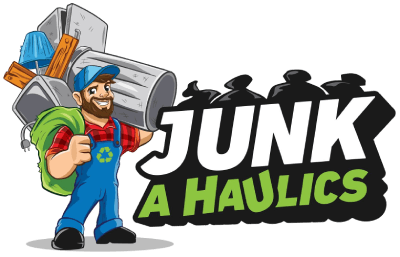Avoiding Costly Mistakes When Removing Your Deck
Removing a deck can be a daunting task, fraught with potential pitfalls that could end up costing you both time and money. Whether you’re tackling this project as part of a renovation or simply looking to upgrade your outdoor space, avoiding costly mistakes is essential. From navigating structural concerns to managing debris disposal, every step of the removal process requires careful planning and execution. In this guide, we’ll explore key strategies to help you avoid common missteps when removing your deck. By understanding the challenges involved and taking proactive measures, you can streamline the process and minimize the risk of unexpected expenses. From assessing the condition of your deck to choosing the right tools and techniques, we’ll cover everything you need to know to ensure a smooth and cost-effective removal experience. Let’s dive in and discover how to dismantle your deck with confidence and efficiency.
Understanding Your Deck's Structure
Before embarking on the task of removing your deck, it’s essential to have a clear understanding of its structure. A deck is more than just a platform; it’s a complex system of beams, joists, posts, and decking materials, all working together to provide a stable outdoor living space. By familiarizing yourself with the key components of your deck’s structure, you’ll be better equipped to plan and execute the removal process efficiently and safely.
Identifying Load-Bearing Elements
The first step in understanding your deck’s structure is identifying its load-bearing elements. These include support posts, beams, and joists, which bear the weight of the deck and distribute it evenly to the ground below. Understanding the placement and function of these components is crucial for ensuring the structural integrity of your deck during removal.
Assessing Decking Materials
Decking materials come in a variety of options, including wood, composite, and PVC. Each material has its own unique properties and requirements for removal. For example, wood decking may be secured with screws or nails, while composite decking often utilizes hidden fastening systems. By identifying the type of decking material used in your deck, you can plan the removal process accordingly and avoid damage to the underlying structure.

Examining Support Posts and Footings
Support posts and footings provide the foundation for your deck, anchoring it securely to the ground below. During the removal process, it’s essential to inspect these components for signs of damage or deterioration, such as rot or shifting. Reinforced concrete footings and sturdy support posts are essential for ensuring the safety and stability of your deck.
Understanding Ledger Board Attachment
The ledger board, attached to the side of your house, plays a critical role in supporting the deck’s weight and anchoring it to the structure of your home. Improper attachment of the ledger board can compromise the integrity of your deck and pose a safety risk. Before removing your deck, ensure that the ledger board is securely attached to the house and properly flashed to prevent water damage.
Inspecting Railings and Balusters
Railings and balusters not only enhance the aesthetic appeal of your deck but also provide safety for occupants. During the removal process, take care to inspect these components for signs of wear or damage. Loose or deteriorating railings and balusters should be repaired or replaced to prevent accidents and ensure compliance with building codes.
Inspecting for Rot and Damage: Essential Steps Before Removing Your Deck
Rot and damage are common issues that can compromise the safety and structural integrity of your deck. Before embarking on the task of removing your deck, it’s essential to conduct a thorough inspection to identify any signs of rot, decay, or other forms of damage. By taking the time to assess the condition of your deck, you can address any issues proactively and ensure a safe and efficient removal process.
Assessing Surface Damage
Begin your inspection by examining the surface of your deck for visible signs of damage. Look for cracked or warped decking boards, loose or missing fasteners, and any areas where the wood appears discolored or splintered. These could be indicators of underlying issues such as rot or decay and should be addressed before proceeding with removal.
Checking Support Posts and Joists
The support posts and joists underneath your deck bear the weight of the structure and are susceptible to damage from moisture and pests. Inspect these components carefully for signs of rot, decay, or insect infestation, paying close attention to areas where they come into contact with the ground or other surfaces. Use a screwdriver or awl to probe the wood for softness, which can indicate decay.
Examining Ledger Board Attachment
The ledger board, which attaches the deck to the house, is a critical connection point that must be inspected thoroughly. Check for signs of water damage or corrosion around the ledger board attachment points, as well as any gaps or spaces between the ledger board and the house. Proper flashing and sealing are essential for preventing water intrusion and prolonging the life of your deck.
Inspecting Railings and Balusters
Railings and balusters not only enhance the safety of your deck but also contribute to its overall aesthetic appeal. Inspect these components for signs of wear, damage, or instability, paying attention to loose or wobbly railings, cracked or splintered balusters, and rusted or corroded fasteners. Repair or replace any damaged or deteriorating railings to ensure the safety of deck occupants.
Checking for Hidden Damage
In addition to visible signs of damage, it’s essential to check for hidden issues that may not be immediately apparent. This includes areas where water may collect, such as between decking boards or underneath the deck surface, as well as areas that are not easily accessible, such as behind landscaping or furniture. Use a flashlight to inspect these areas thoroughly, looking for signs of moisture, mold, or decay.
Proper Waste Disposal During Deck Removal
Intro: Proper waste disposal is a crucial aspect of deck removal that is often overlooked. Failing to dispose of old deck materials responsibly can lead to environmental damage and legal consequences. By following a few key guidelines, you can ensure that your deck removal project is eco-friendly and compliant with local regulations.
- Segregation of Materials: Separate recyclable materials, such as metal hardware and composite decking, from non-recyclable waste like treated wood. This makes disposal more efficient and reduces the environmental impact.
- Local Regulations: Research local waste disposal regulations and ordinances before starting your project. Some areas have specific rules regarding the disposal of construction debris, including requirements for recycling and landfill disposal.
- Reuse and Repurpose: Whenever possible, consider reusing or repurposing salvaged materials from your old deck. Not only does this reduce waste, but it can also save money on future projects.
- Professional Services: For larger deck removal projects, consider hiring a professional waste removal service. They can ensure that materials are disposed of properly and may offer recycling options that are not available through standard waste collection services.
Conclusion
When it comes to removing your deck, avoiding costly mistakes is crucial for both your budget and safety. From proper planning and assessing the structural integrity to choosing the right tools and techniques, every step matters. By following the guidelines outlined in this blog, you can ensure a smoother and more cost-effective deck removal process, saving yourself from unnecessary expenses and potential hazards.
If you have any further questions or need assistance with your deck removal project, feel free to reach out to JUNKAHAULICS in Raleigh. Our team of professionals is dedicated to providing reliable and efficient junk removal services, including deck removal. You can contact us at 919-478-4814, and we’ll be happy to discuss your needs and provide you with a customized solution tailored to your requirements. Don’t let deck removal become a headache; let JUNKAHAULICS handle it for you!




